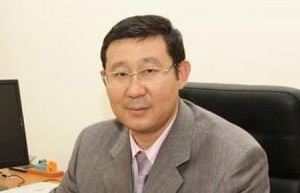 To become a major regional exporter of agricultural products, Kazakhstan must provide domestic farmers with direct access to long-term financing and markets. This should be supported by an effective system of loan guarantees and insurance. The government was instructed to adjust its agricultural development planning in the Agribusiness 2020 programme. The focus in this document is on the development of industries that can be potential players in the domestic market of agricultural commodities.
To become a major regional exporter of agricultural products, Kazakhstan must provide domestic farmers with direct access to long-term financing and markets. This should be supported by an effective system of loan guarantees and insurance. The government was instructed to adjust its agricultural development planning in the Agribusiness 2020 programme. The focus in this document is on the development of industries that can be potential players in the domestic market of agricultural commodities.
Nevertheless, the programme does not identify parameters for increased quality of life among the rural population and key incentives for the lower layers of rural society.
Today, the industry’s realities are as follows: against the background of steady growth in gross domestic product (by more than 16 times since 1999), the share of agro-indsutrial complex (AIC) in the structure of the national economy decreased by seven times. In particular, from 1991, its share fell from 29.5 percent to reach 4.3 percent in 2012. In two decades, Kazakhstan joined the group of countries with developed urban economies, despite the fact that approximately 45.1 percent of the country’s population lives in rural areas.
Meanwhile, conclusions made by Ernst & Young in the study of Russia’s accession to the WTO indicate a depressive contraction of high-tech sectors of the Russian agro industrial complex under WTO conditions. For Kazakhstan’s less diversified agrarian industry, the likelihood of this is high. In this context, the President’s instructions to adjust the programme are relevant as never before.
We believe that the desired future of the agricultural industry is inextricably linked with the appearance in AIC production of new, powerful players from the urbanised population, as well as the involvement of local medium- and small-scale farmers to be heard locally.
The Kazakhstan 2050 strategy sets the task for the industry to become a global player in the field of clean production. Clearly, the well-being of any company depends not only on strong relationships with government agencies, but also on consumers’ preferences, because under WTO conditions, the state cannot help manufacturers.
All market participants should have a clear understanding that the owner of agricultural land today has been defined. Taking into account this determining factor, it is necessary to build a bridge between science, agribusiness and the state in the form of project management, which will create a competition of applied projects oriented to concrete owner of the farmland. In addition, inter-branch, industrial and packaging production should be united up to minimum business components which correspond to the latest international trading standards, including the Customs Union. The state must also directly participate in the commercial regulation of access to all foreign markets, including such non-traditional regions (for Kazakhstan) as Africa, Southeast Asia and India, which are not WTO members.
It also seems appropriate to unite in the market environment all institutes of development (including their structures and human and material resources) and second-tier banks and determine a scientific regulator. This step will oblige banks to lend to agribusiness at 1 percent and expand leasing opportunities to update the basic agrarian funds. In turn, second-tier banks will be responsible before the state for return of these funds to the national budget. Thereby, they will be motivated to finance real projects that generate a steady income.
Here, they can use their financing resources of the Islamic world, where more than $1.5 trillion has been accumulated. Taking into account the global crisis, we can buy new and existing agricultural technologies and equipment on favourable terms.
For complete resource support of agribusiness by the state, adequate logistics for storing and delivering agriculture products to the final consumer are necessary. Commercial packaging, advertising and the infrastructure for transporting goods to commodity markets play a no less important role. All this conditions the necessity of a new modern transport system with long-term storage technology.
To further penetrate foreign markets, Kazakhstan needs a strategy of creating an international presence through the development of terminal-service infrastructure, not only inside the country, but also abroad, mainly on the trade routes between Asia, Indochina and Europe. Priorities should be developing a sales network of transport and logistics services, building or leasing terminal facilities at sea and at “dry” ports on the Caspian, Baltic and Black Seas and terminals in China, India, Russia, the EU and the Persian Gulf.
It is also clear that all these recommendations can be introduced with the help of science. Initially, it will be good to create the rules of the game, i.e., creating an institutional environment and managerial levers. This will be possible through public-private and scientific partnerships.
Today, our state has a substantial margin of institutional, economic and financial reserves of growth. For example, state budget reserves alone are estimated at 10-15 percent of current expenditures.
The new AIC strategy must include measures aimed at the formation in the public consciousness of a new attitude toward agriculture as the sphere of successful people. This process should actively involve the full potential of culture: media, cinema, the Internet and even show business. I think that Agribusiness 2020 also must contain incentives for internal reserves and increased market awareness in farmers.
The author is Professor of the Department of Economic Management of the Academy of Public Administration under the President of Kazakhstan, Academician of National Academy of Natural Sciences of the Republic of Kazakhstan.


